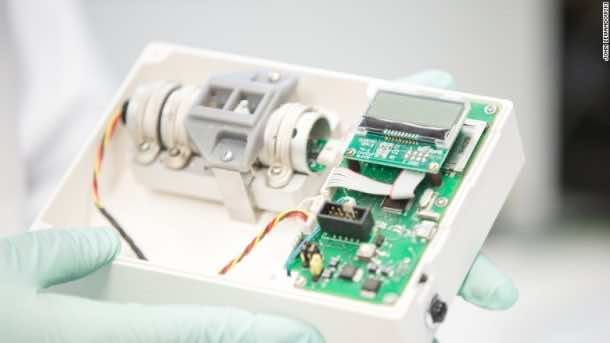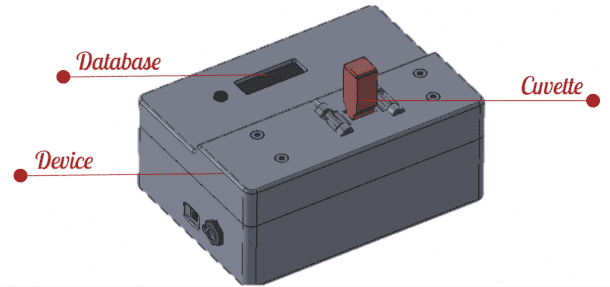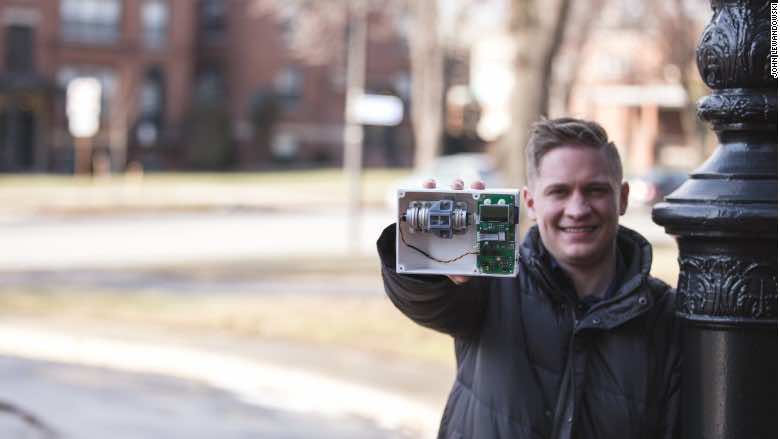Every year, 200 million people are affected by a life threatening, mosquito-borne disease called Malaria. Last year, approximately 438,000 people died of malaria ( with most deaths in sub-Saharan Africa) according to World Health Organization- despite the existing cure and preventive measures. Being a PhD student at MIT studying mechanical engineering, John Lewandowski said that early diagnosis of malaria is very important:
“Early detection is very important, typically in the first five to seven days before symptoms arise, so that treatment can begin.”
There are two methods to detect malaria. First is to take the blood sample of patient and observe it under the microscope to recognize the Plasmodium parasite and second is diagnostic test on blood drop, which gives a positive/ negative result, kind of like the pregnancy stick test. The main problem is that rural areas in Asia and Africa, where malaria is prevalent, do not have the necessary medical infrastructure for example, a microscope. And the blood drop test doesn’t detect malaria in earlier stages.
So Lewandowski designed RAM (Rapid Assessment of Malaria) a mechanical device that used a blood drop to give you results in 5 seconds. This device makes malarial diagnosis cheaper and faster.

The RAM costs about 100-120 dollars and is made from low-cost, easily available materials. It has a small circuit board, a battery, few magnets and a laser enclosed in a 4×4 inches plastic box. The exterior has a disposable cuvette, SD card slot and an LCD screen.
“It’s pretty bare bones,” said Lewandowski, who is also the CEO of Disease Diagnostic Group, a startup developing the device. “Malaria parasites in human blood create iron crystals that are magnetic in nature. As an engineer, I thought about creating a way to detect these magnetic crystals quickly,” he said.
How it works? Well, you prick a finger and insert the blood drop into the box through the cuvette. If malaria is present, it will form crystals that will be attracted by the magnets in the device, forming a pattern. This pattern is detected by the laser which then diagnoses the presence or absence of malaria. If malaria is absent, no crystals, no magnetic attraction and no pattern. The technology is simple, quick and easy-to-use. Recently, a lot of work is being done on diagnostic devices that involve rapid blood testing but Lewandowski said his device is novel and is not merely ‘reinventing the wheel’. He said:
“Our technology is just speeding up that same process and bringing down the cost and currently the company is exploring how the technology could pivot to test for other mosquito-borne diseases like dengue fever and Zika virus.”

The Disease Diagnostic Group has tested the RAM device since 2013 in clinical tests conducted in India. Lewandowski stated that in a sample of 250 patients, their results showed accuracy as high as 93%-97%. He also revealed that soon the tests will be conducted in Nigeria with 20 times the sample size as that of India. The DDG start-up has won different business competitions, like the Harvard Life Science Accelerator and the MIT $100K Pitch Competition, accumulating about $1.5 million in prize money which was used to finance the device development. The company has submitted RAM for approval to the World Health Organization and for European Union health and safety certification.
DDG has begun to sell RAM devices in small quantities to doctors in small clinics and small-scale practitioners in India to conduct field tests. Lewandowski is hopeful that by next year, the malarial diagnostic device will be widely available for use of the families living in rural, high-risk regions of malarial infection.

“For us, social impact is our mission,”Lewandowski said. “We want them to be used in the right way by the right people who need them the most.”


